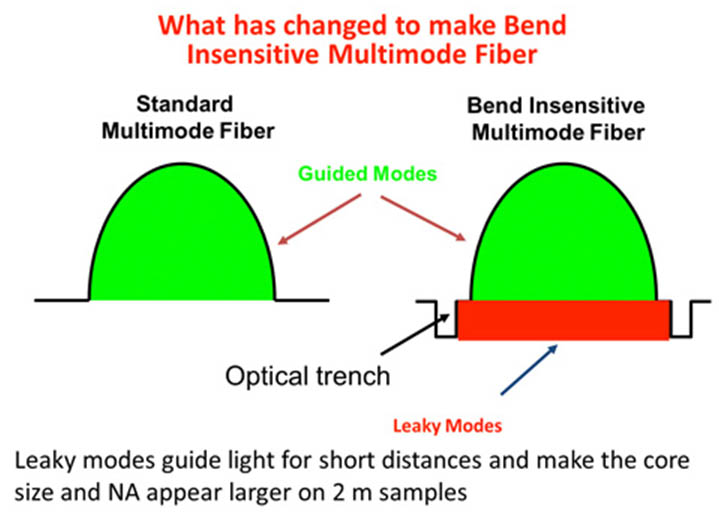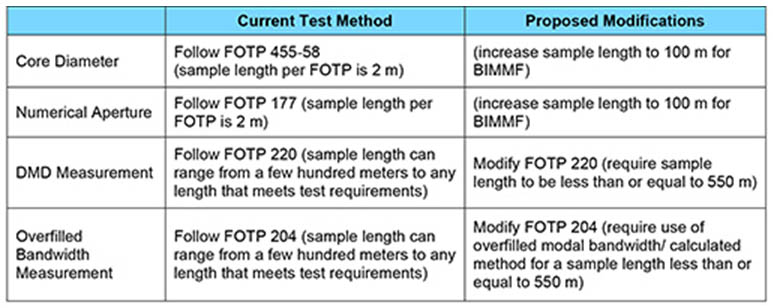
Enterprise Networks
Standardization of bend-insensitive multimode fiber (BIMMF) has been a very active area within the Telecommunications Industry Association (TIA) and the International Electrotechnical Commission (IEC). Since the start of the year, more than a dozen contributions on the topic have been reviewed in the TIA working group TR-42.12 “Optical Fiber and Cable.”
The figure below shows examples of refractive index profiles of standard and bend-insensitive multimode fibers. The major difference between the two fiber types is that the bend-insensitive fiber design can include an optical trench. While this trench improves the fiber’s macrobend performance, it also causes additional light to be guided in “leaky modes” that are not present in standard multimode fibers.

All of the standardized measurements used to characterize multimode fiber were developed between the late 1980s and 2005. These measurement methods include numerical aperture, core diameter, overfilled bandwidth and differential mode delay (DMD). These standards were written prior to the introduction of BIMMF and may not appropriately characterize performance of multimode fibers with optical trenches.
It’s important to note that the optical trench allows an additional group of leaky modes to propagate distances of a few hundred meters, on the length scale that is consistent with those found in data centers and enterprise networks. The discussion in the TIA working group centers on how to account for the leaky modes. There are two schools of thought. The first is using the standards as written, on the assumption that they accurately describe all graded-index multimode fibers. The other view is that the measurements need to be modified to account for leaky modes. The table included here summarizes the current test methods and the proposed modifications to each.

What’s interesting about the proposed modifications is that they have almost no impact on the measured values of standard multimode fibers, but they have a dramatic impact on the measured values of BIMMF. Analyses being conducted include modeling work, test-method comparisons, connection studies and system-performance tests. Results range from no difference to significant system impact.
At this point, the task force has not reached full consensus, and our goal is to resolve these differences in the near future. My guidance to the task group is that we standardize bend-insensitive multimode fibers in a way that will enable seamless interoperability between standard and bend-insensitive fiber types. Our objective is to ensure that no additional penalties for connection loss or bandwidth occur when these fibers are deployed in actual networks. Resolving the differences highlighted in the table remains our key focus.
Written by,
David Mazzarese

